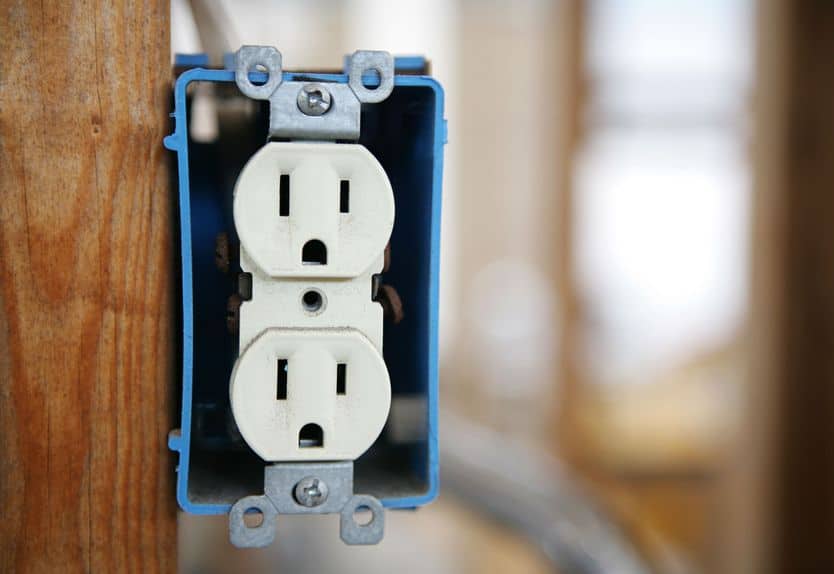 Electrical safety is a crucial aspect of any building or home. The outlets that house your electrical circuits are essential components of any electrical system. If not maintained or installed properly, they can pose a significant safety risk, especially in areas where water is present, such as bathrooms and kitchens.
Electrical safety is a crucial aspect of any building or home. The outlets that house your electrical circuits are essential components of any electrical system. If not maintained or installed properly, they can pose a significant safety risk, especially in areas where water is present, such as bathrooms and kitchens.
In your home, there are likely two categories of electrical outlets: GFI and GFCI. There are several key differences between GFI and GFCI outlets to note, as well as their importance in maintaining electrical safety within your home.
What are GFI and GCFI Outlets?
GFI and GFCI outlets are similar in function and design. Both types of outlets are designed to protect against electrical shock. GFI stands for Ground Fault Interrupter, while GFCI stands for Ground Fault Circuit Interrupter. The terms “GFI” and “GFCI” are often used interchangeably, but there are several differences between the two types of outlets.
The primary difference between GFI and GFCI outlets is their application. GFI outlets are commonly used in older homes and buildings, while GFCI outlets are required by the National Electric Code in newer construction. GFCI outlets are more advanced than GFI outlets and offer better protection against electrical shock.
Both GFI and GFCI outlets work by interrupting the flow of electric current if a ground fault is detected. A ground fault occurs when an electrical current flows through an unintended path, such as a person’s body or water. This can result in electric shock, which can be dangerous or even fatal. GFI and GFCI outlets are designed to detect these ground faults and interrupt the flow of electricity that causes electrical shock.
GFI outlets are installed in electrical outlets and require a separate circuit breaker, but GFCI outlets can be installed in both outlets and breakers. GFCI outlets generally have a test button on the outlet that allows you to check if the outlet is functioning correctly. The reset button on the outlet is used to reset the outlet after a ground fault has been detected. GFCI outlets are more advanced than GFI outlets since they offer an extra layer of protection against electrical shock.
Common Misconceptions about GFI & GCFI Outlets
One of the common misconceptions about GFI and GFCI outlets is that they are identical or simply variations of one another. While they may look similar, there is a significant difference between the two. GFI outlets are made using older technology and do not offer the same level of protection as GFCI outlets. GFCI outlets are now required by law in newer homes and buildings, especially in areas where water is present, like bathrooms, laundry rooms and kitchens.
Another common misconception is that GFI and GFCI outlets are only needed in older homes and buildings. Despite this misconception, GFCI outlets are required by the National Electric Code in newer homes and buildings, and for good reason. Electrical shock can happen anywhere and GFCI outlets provide better and more advanced protection against these dangers.
It is essential to understand the difference between GFI and GFCI outlets to ensure that you have the right type of outlet in your home or building. If you live in older construction, it is recommended that you replace any GFI outlets with GFCI outlets for better protection.
Using GCFI Outlets in Outdoor Areas for Optimal Protection
In addition to bathrooms, laundry rooms and kitchens, GFCI outlets are also highly recommended for use in outdoor areas near swimming pools or hot tubs. It is important to note that GFCI protection is not just for people, but also for equipment. Electrical equipment that meets water can also cause ground faults and lead to electrical shock. GFCI protection can help to prevent equipment damage and ensure that it operates safely.
GFCI outlets also provide excellent protection against electrical shock, but they are not foolproof. Users should still exercise caution when using electrical appliances near water and follow basic electrical safety practices, such as not touching electrical appliances with wet hands and unplugging appliances before cleaning them.
It is also important to remember that GFCI protection is not a substitute for proper grounding. Grounding ensures that excess electrical energy is safely discharged into the ground, preventing electrical shock and equipment damage. GFCI protection serves as an additional layer of protection that complements proper grounding, but it is not a full substitute.
Which Outlets Are Right for You?
GFI and GFCI outlets are essential components of any electrical system, especially in areas where water is present. While both types of outlets serve a similar function, GFCI outlets are more advanced and offer better protection against electrical shock. It is important to understand the difference between GFI and GFCI outlets and to ensure that you have the right type of outlet in your home or building. Remember to test GFCI outlets regularly using the test button on the outlet to ensure that they are functioning correctly. By taking the necessary precautions and following basic electrical safety practices, you can ensure that your home or building is safe from electrical shock.
Make Sure Your Outlets are Working for You!
When your GFI or GFCI outlets start to malfunction, it can come as a bit of a shock (not the fun kind!). Grounded Solutions is here for all your outlet needs, whether you need new outlets installed or some simple maintenance checks on your electrical circuits.
At Grounded Solutions, our purpose is to be a team of disciplined, accountable, prepared professionals who deliver excellence in everything we do. Put your electrical needs in capable hands with us! Contact us to learn more about what we can do for you today.



